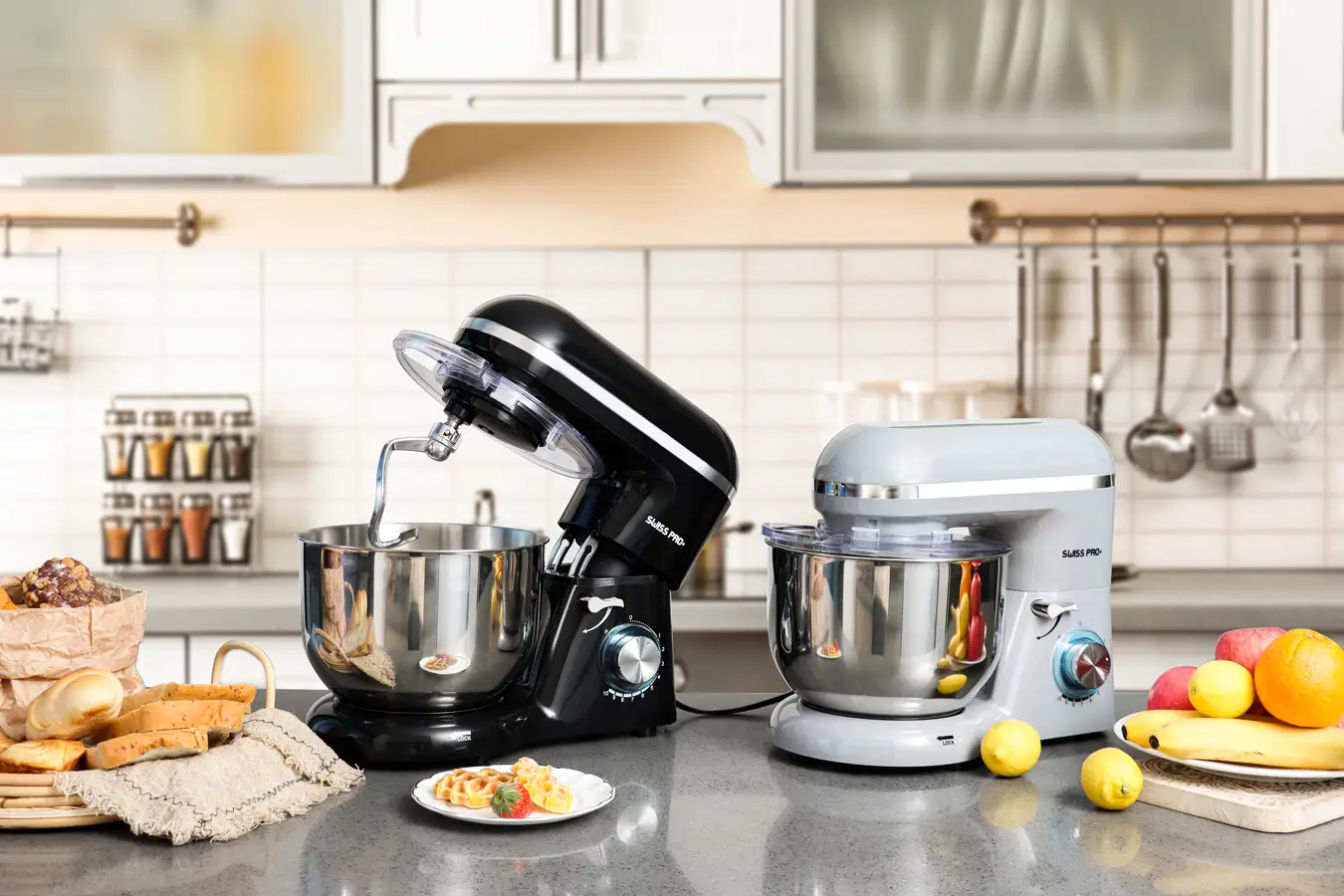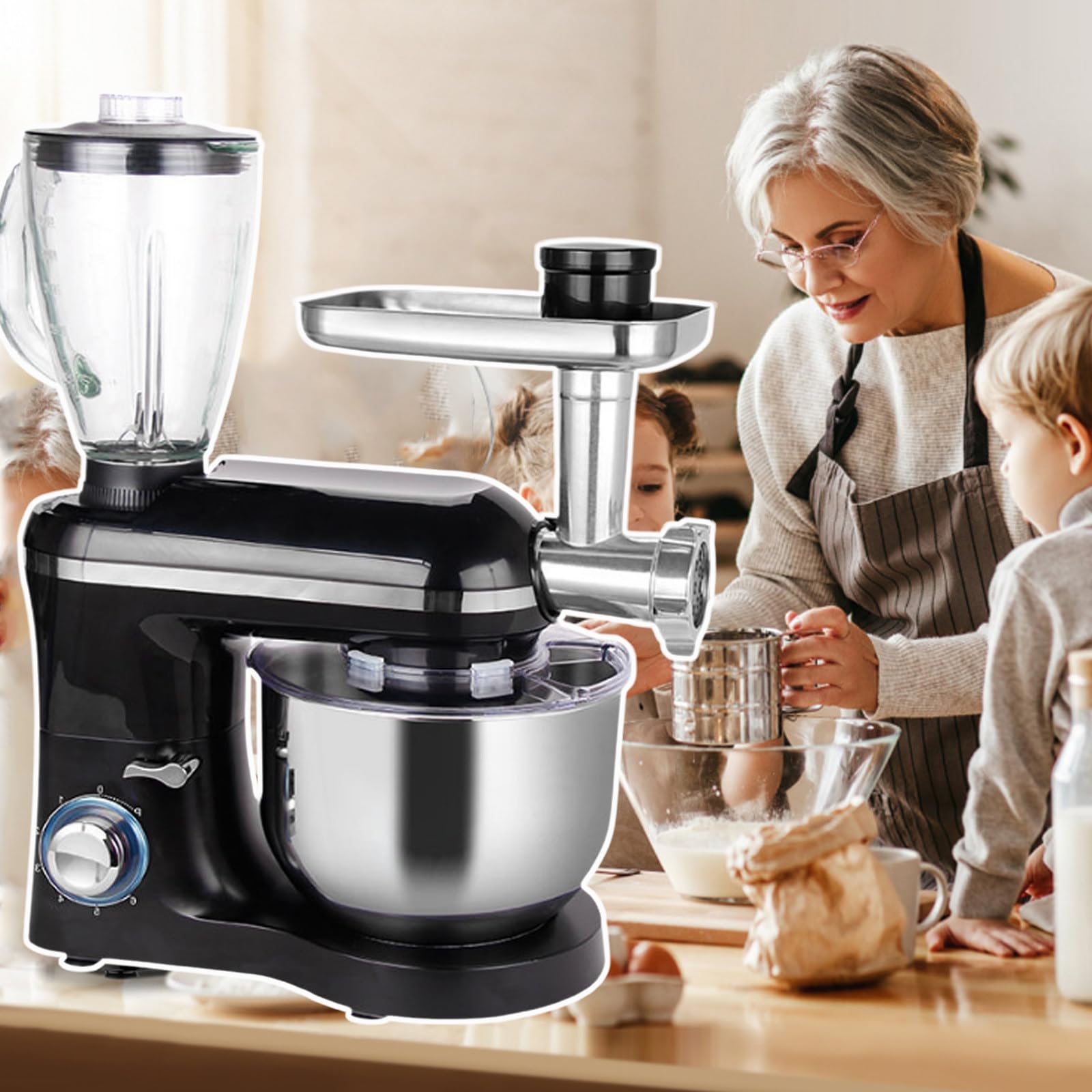Let’s talk about a true kitchen icon. It’s the centerpiece of countless countertops, the workhorse behind holiday feasts, and the coveted prize for anyone serious about baking. We’re talking, of course, about the KitchenAid stand mixer. But with a hefty price tag and a dazzling array of models, is it truly worth the investment? This comprehensive Kitchenaid Stand Mixer Review is here to break it all down. As the lead advisor at Stand Mixer Pro, I’ve spent years putting these machines through their paces, and I’m here to give you the straight scoop—the good, the great, and what you absolutely need to know before you buy.
Are you teetering on the edge of bringing one of these beauties home? Or perhaps you’re looking to upgrade from an older model? Stick with me. We’re going beyond the glossy product photos to explore what makes this kitchen appliance a legend and help you decide if it’s the right partner for your culinary adventures.
Why a KitchenAid Stand Mixer is a Game Changer
Before we dive into the nuts and bolts, let’s address the big question: why this specific brand? I remember my first stand mixer. It wasn’t a KitchenAid, and while it did the job, upgrading was like going from a bicycle to a car. A KitchenAid isn’t just a mixer; it’s a culinary power tool that offers three core benefits:
- Power and Efficiency: Kneading bread dough by hand is a workout. Whipping egg whites to stiff peaks can feel like it takes an eternity. A KitchenAid, with its robust motor, does the heavy lifting for you, delivering consistent, professional-quality results every single time.
- Hands-Free Versatility: This is the real magic. While the mixer is busy perfectly creaming butter and sugar, your hands are free to measure the next ingredients, grease a pan, or simply sip your coffee. It transforms your workflow, making complex recipes feel manageable and fun.
- Unmatched Durability: These mixers are built like tanks. With their all-metal construction, they are designed to be a once-in-a-lifetime purchase. It’s not uncommon to hear stories of mixers being passed down through generations—a testament to their incredible build quality.

Decoding the Models: Tilt-Head vs. Bowl-Lift
When you start your search, you’ll immediately face the first major choice: Tilt-Head or Bowl-Lift? This isn’t just about looks; it fundamentally changes how you interact with the machine.
A Tilt-Head model (like the iconic Artisan Series) is what most people picture. The motor head hinges back, giving you easy access to the bowl and beater. A Bowl-Lift model (like the Pro Line) keeps the head stationary while a lever raises the bowl up into position.
Here’s a quick breakdown to help you choose:
| Feature | Tilt-Head (e.g., Artisan Series) | Bowl-Lift (e.g., Pro Series) |
|---|---|---|
| Best For | Most home bakers, small to medium batches. | Frequent bakers, large batches, heavy doughs. |
| Capacity | Typically 3.5 to 5 quarts. | Typically 5 to 8 quarts. |
| Access | Easy bowl access; head tilts back. | Requires lowering the bowl to access. |
| Size | More compact, fits under most cabinets. | Taller and heavier; may not fit under cabinets. |
| Power | Excellent for most tasks. | More powerful motor for dense mixtures like bread. |
| Stability | Very stable for its size. | Extremely stable due to fixed head design. |
Think of it this way: the Tilt-Head is like a versatile sedan—perfect for daily driving and most family trips. The Bowl-Lift is the heavy-duty truck you bring in when you need to haul serious cargo. If you’re making a dozen cookies, the Artisan is your friend. If you’re kneading multiple loaves of sourdough every week, the Pro series is your workhorse.
An In-Depth KitchenAid Stand Mixer Review of Core Features
What truly sets a KitchenAid apart isn’t just its iconic silhouette. It’s the engineering under the hood.
The Legendary Planetary Mixing Action
This is the secret sauce. “Planetary Mixing Action” sounds like something out of a sci-fi movie, but it’s quite simple. The beater spins on its axis in one direction, while the shaft moves it around the bowl in the opposite direction. This creates an incredible number of contact points—KitchenAid claims 59 touchpoints per rotation in most models.
Why does this matter? It means you don’t have to constantly stop and scrape the sides of the bowl. The mixer does it for you, ensuring every last bit of flour and butter is perfectly incorporated. It’s the key to light, fluffy cakes and silky smooth frostings.
Motor Power: More Than Just Watts
You’ll see different wattage ratings across models, but don’t get too hung up on that number. A more critical factor is the motor type. Many of the more powerful and quieter Bowl-Lift models use a DC (Direct Current) motor, which delivers more consistent torque and power directly to the bowl, even with heavy mixtures. AC (Alternating Current) motors, found in many Tilt-Head models, are still incredibly capable but may run warmer and a bit louder under heavy load.
According to kitchen appliance engineer David Chen, “A well-designed DC motor can deliver superior torque with lower wattage compared to a less efficient AC motor. For bakers working with dense bread doughs, that consistent torque is what prevents the mixer from straining.”
Build Quality: Built to Last a Lifetime?
Absolutely. The die-cast zinc metal construction gives these machines their signature heft. This weight isn’t for show; it’s essential for stability. When you’re kneading a stiff dough, the last thing you want is your mixer “walking” across the counter. The solid build of a KitchenAid stand mixer keeps it planted firmly where it belongs. This is a key finding in any credible kitchenaid stand mixer review.
What Can You Make? Unlocking the Standard Attachments
Your new KitchenAid will come with three essential tools. Mastering them is the first step to unlocking its potential.
- The Flat Beater: This is your multi-purpose champion. It’s for any “creaming” or “beating” task. Think cookie dough, cake batter, frosting, and even shredding cooked chicken. Pro Tip: Start on a low speed to incorporate dry ingredients without creating a flour cloud.
- The Dough Hook: Bread bakers, rejoice! This tool expertly mimics the folding and stretching motion of hand-kneading. It develops the gluten in your dough efficiently, giving you a smooth, elastic result perfect for bread, pizza, and cinnamon rolls. For an in-depth look, check out our [guide to using the dough hook effectively].
- The Wire Whisk (or Wire Whip): This is for incorporating air. Use it for whipping egg whites into cloud-like meringues, turning heavy cream into whipped cream, and making airy angel food cake. Important: Avoid using the whisk on heavy mixtures like cookie dough, as you can bend the wires.
How to Clean and Maintain Your KitchenAid Mixer
Keeping your mixer in top shape is simple. A little care goes a long way in ensuring it lasts for decades.
- Always Unplug First: This is non-negotiable. Safety first!
- Wipe Down the Body: Use a soft, damp cloth to wipe down the mixer body and motor head after each use. Never submerge the main unit in water.
- Check Your Attachments: Most standard flat beaters and dough hooks (the coated ones) are dishwasher-safe on the top rack. However, the standard wire whisk often has an aluminum hub and must be hand-washed to prevent oxidation and black residue. Always check your specific model’s manual.
- Clean the Bowl: Stainless steel bowls are dishwasher safe and incredibly easy to clean.
- Perform the “Dime Test”: Over time, the beater-to-bowl clearance might need adjustment. Drop a dime in the empty bowl and turn the mixer on low with the flat beater. The beater should just barely move the dime without hitting it hard. You can adjust the height with a small screw located on the hinge.

Frequently Asked Questions (FAQ)
Q: Which KitchenAid model is best for a beginner?
A: The KitchenAid Artisan 5-Quart Tilt-Head is the quintessential choice for most beginners and home bakers. It offers the perfect balance of power, size, and versatility for a wide range of recipes without being overwhelming.
Q: Can a KitchenAid stand mixer knead all types of dough?
A: Yes, a KitchenAid stand mixer is designed for kneading dough. While Tilt-Head models are great for most bread recipes, the Bowl-Lift models with their more powerful motors and spiral dough hooks are specifically engineered for heavy, dense doughs like whole wheat or large batches of sourdough.
Q: Are all the KitchenAid attachments dishwasher safe?
A: Not all of them. The stainless steel bowls and coated beaters/hooks are generally dishwasher safe. However, attachments made from burnished aluminum, like some standard wire whisks and beaters, must be hand-washed to prevent them from oxidizing and turning black.
Q: How long does a KitchenAid mixer actually last?
A: With proper care, a KitchenAid stand mixer can easily last 15, 20, or even 30+ years. Its all-metal construction and simple, robust mechanics are designed for longevity, which is a major factor in justifying its initial cost.
Q: Is the KitchenAid stand mixer really worth the high price?
A: For those who bake or cook regularly, the answer is a resounding yes. It’s an investment in quality, efficiency, and consistency that saves you time and physical effort. Its durability means you won’t be replacing it every few years, making it more cost-effective in the long run.
The Final Verdict
So, after this deep-dive kitchenaid stand mixer review, what’s the bottom line? A KitchenAid stand mixer is more than just a kitchen appliance; it’s an investment in your passion for food. It empowers you to tackle more ambitious recipes, produces consistently superior results, and is built to be a reliable partner in your kitchen for decades. While the initial cost is significant, its performance, durability, and versatility make it an unparalleled value for anyone serious about their craft.
Have you made the leap? Share your experience with your KitchenAid in the comments below! We’d love to hear what you’re creating.
2 thoughts on “The Ultimate KitchenAid Stand Mixer Review: A Baker’s Guide”